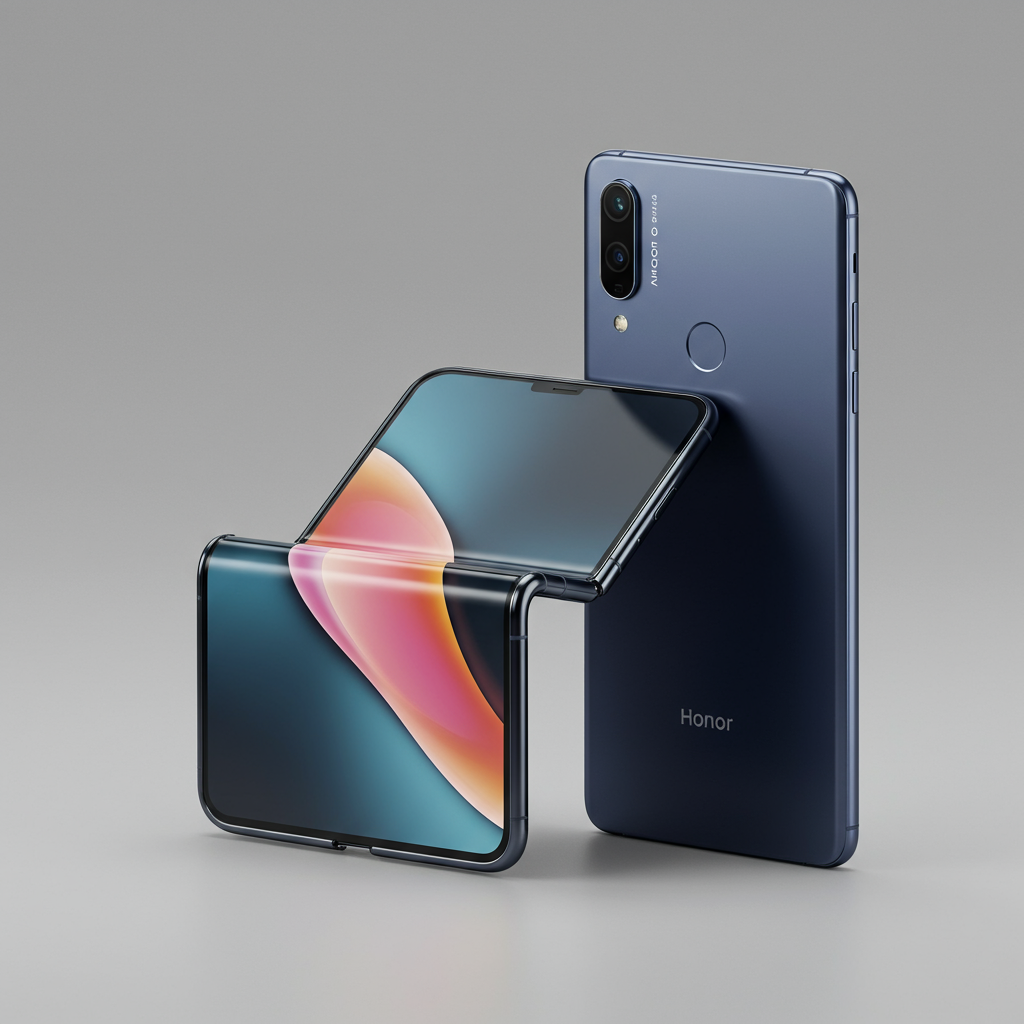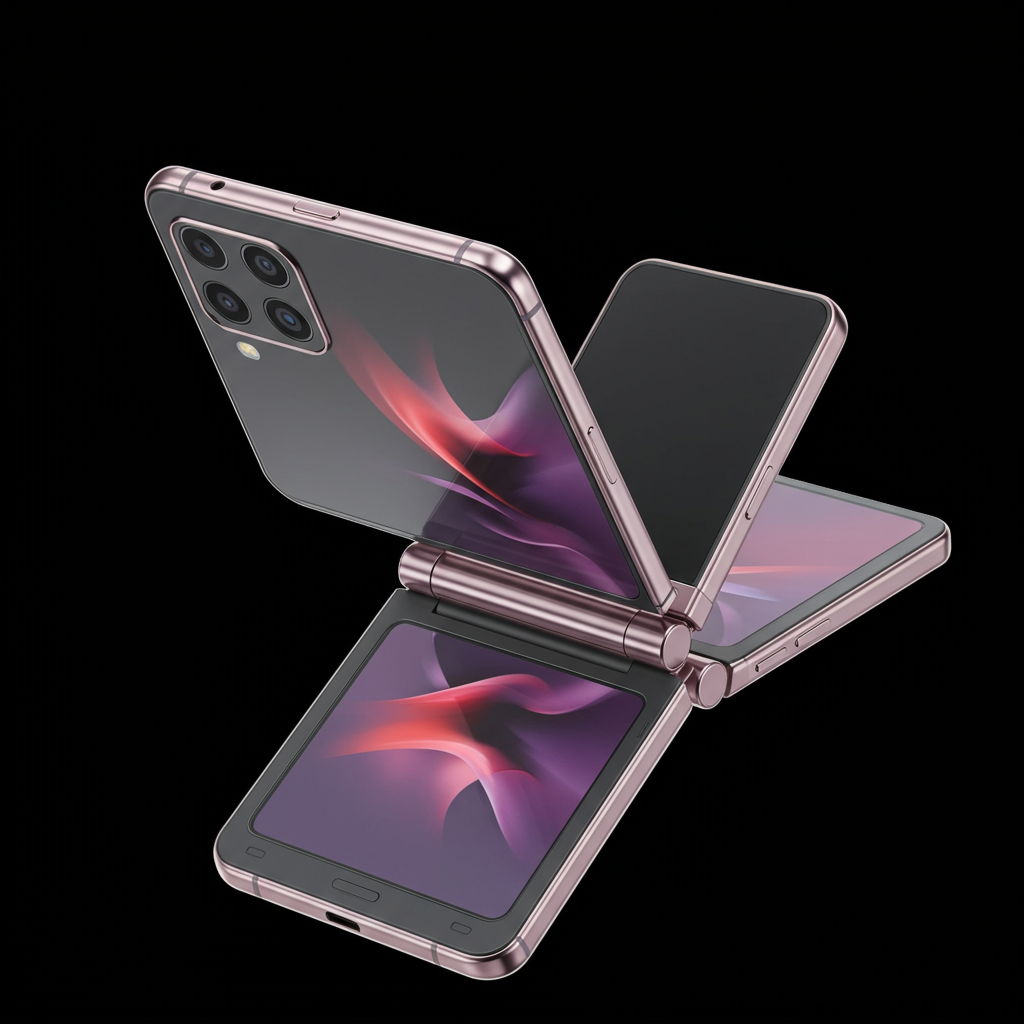The smartphone market is buzzing with foldable devices. What started as a niche concept has quickly become a battleground for innovation. Manufacturers are pushing boundaries, particularly when it comes to form factor. If apple plans to join the foldable fray, it faces a significant challenge. Meeting current expectations for a foldable iPhone thinness is absolutely essential for its success.
Just recently, Honor unveiled the magic V5. This device has reset the standard for thinness in the foldable category. Its arrival sets a new benchmark. Not only does this challenge rivals like Samsung, the current leader in folding phones, but it also puts pressure on Apple. Rumors suggest Apple is actively developing its own foldable. This means it now has a new, slim target to aim for.
The New Standard Set by Honor
Let’s look closer at the Honor Magic V5. Its standout feature is its incredibly thin design. According to Honor, the Magic V5 measures just 8.8mm when folded closed. This figure earns it the title of the thinnest foldable currently available. While only slightly slimmer than its predecessor, the Oppo Find N5 (8.9mm), it still represents a technical achievement. When unfolded, the Magic V5 maintains its svelte profile. It measures a mere 4.1mm on each side.
There is one point worth noting: the phone does feature a rather large camera bump. This protrusion affects the overall flat profile when laid down. However, it doesn’t detract from its claim as the thinnest body overall. The foldable landscape evolves rapidly. Samsung is expected to launch its next generation of foldables soon. These new models could potentially surpass Honor’s benchmark. Yet, regardless of future releases, the Magic V5 defines the current minimum expectation for a premium foldable’s thickness.
Why Thinness Matters for Apple’s Foldable
Apple is known for taking its time entering new product categories. When it eventually launches a foldable iPhone, likely a high-end device, expectations will be sky-high. Consumers will anticipate a product that feels refined and significantly better than existing options. This perceived value is tied directly to the hardware. A competitive foldable iPhone must deliver on multiple fronts. It needs a minimal or invisible screen crease. A durable hinge that resists dust and debris is also critical. But perhaps most importantly, it must be exceptionally thin.
Foldable phones inherently present a design challenge. They fold in half, effectively doubling the thickness in many cases. This can result in devices that feel bulky or “chunky.” Thinness is a core component of a phone’s form factor and pocketability. For a “book-style” foldable, where a large screen folds inwards, managing thickness is paramount. A foldable iPhone that appears thick next to rivals like the Magic V5 or upcoming Samsung models would risk harming Apple’s image. It could fuel the narrative that Apple lags behind in innovation, particularly when other companies are rapidly advancing designs and integrating features like sophisticated AI.
Apple’s design philosophy often emphasizes sleekness and efficiency. Their history with custom silicon, like the A18 Pro chip (reportedly powering a potentially thin, efficient MacBook), demonstrates their capability for compact, power-efficient designs. While chips aren’t the main factor in foldable thickness, this expertise reflects a broader commitment to engineering devices that are powerful yet streamlined. Furthermore, Apple has shown a willingness to evolve its designs for new paradigms, like removing the Home button in favor of gestures and new inputs. Adapting to the unique form factor requirements of a foldable aligns with this history, but demands overcoming significant technical hurdles.
Engineering Challenges and Expectations
Creating a thin foldable phone involves complex engineering. It requires innovative hinge mechanisms that reduce the gap when closed. Sophisticated display technology with multiple layers must be compacted. Components like batteries and cooling systems need miniaturization or creative placement. Apple has reportedly been developing a foldable for several years. Recent rumors, including reports from DigiTimes, suggest a production prototype now exists. This indicates significant progress has been made.
However, the critical question remains: can Apple achieve the level of thinness already demonstrated by competitors? Matching the 8.8mm folded profile of the Magic V5 requires significant technical prowess. For the sake of potential customers and Apple’s reputation, this level of hardware excellence is non-negotiable. A foldable iPhone arriving late to the market must justify its delay with superior design, and thinness is a key metric for this.
A thick foldable iPhone wouldn’t just be less convenient to carry; it would be perceived as less advanced. In a market rapidly iterating on form factor, a bulky device would feel like a step backward. It would reinforce criticisms that Apple is slow to innovate in hardware compared to competitors. Therefore, for a foldable iPhone to succeed and meet the high expectations surrounding it, being competitively thin isn’t just a feature – it’s a fundamental requirement. Apple needs to deliver a truly slim foldable, or it risks missing the mark entirely.
Competing in a Maturing Market
The foldable market is becoming more diverse. Samsung is exploring ways to make foldables more accessible, potentially with models like a more affordable Galaxy Z Flip FE, according to recent rumors. This broader market context means Apple isn’t just competing on high-end features but also against a growing range of devices, some of which are becoming more mainstream. While Apple’s foldable will likely target the premium segment, its design must still stand out in an increasingly crowded space defined by evolving form factors and improved thinness.
The compromises Apple makes in entry-level devices, like the iPhone 16e which omits features like MagSafe, Dynamic Island, and extra camera lenses to hit a lower price point, offer insight into their product strategy. However, a foldable iPhone sits at the opposite end of the spectrum. It will be a flagship device. As such, it cannot afford the same kind of design compromises seen in budget models. Thinness, along with hinge durability and crease minimization, is a fundamental aspect of a premium foldable experience that Apple cannot afford to sacrifice.
The Bottom Line for Apple’s Foldable
Ultimately, the success of a foldable iPhone hinges significantly on its physical design. While software integration and the Apple ecosystem are crucial, a device that feels clunky or outdated compared to rivals will struggle. The Honor Magic V5 has set a clear benchmark for folded thinness at 8.8mm. Any foldable iPhone entering the market needs to at least match this, if not surpass it. Apple has the engineering talent and resources to achieve this. The question is whether they will prioritize this critical aspect in their design process. For a foldable iPhone to thrive, it must be a masterclass in compact engineering. Without a truly thin design, it risks being overshadowed and failing to capture the market’s imagination. The bar has been set.
Frequently Asked Questions
What is the new benchmark for foldable phone thinness?
The new benchmark for foldable phone thinness is set by the Honor Magic V5, which measures just 8.8mm when folded closed. This makes it slightly thinner than the previous record holder, the Oppo Find N5. When unfolded, the Magic V5 is 4.1mm thick on each side.
Why is thinness particularly important for a foldable iPhone?
Thinness is crucial for a foldable iPhone because foldable designs naturally tend to be thick or bulky when closed. As a potential high-end device from Apple, which is expected to be “materially better” due to its long development time, it must have a premium form factor. A thick design would make it less portable and could damage Apple’s reputation for innovation compared to competitors already achieving very thin foldables.
What engineering challenges does Apple face in making a thin foldable?
Apple faces challenges in designing an innovative hinge mechanism that minimizes the gap and thickness when folded, compacting multi-layer display technology, and integrating components like batteries and cooling systems within a slim profile. Achieving a thin yet durable design requires overcoming complex technical hurdles that have been addressed by current market leaders like Honor and Samsung.



